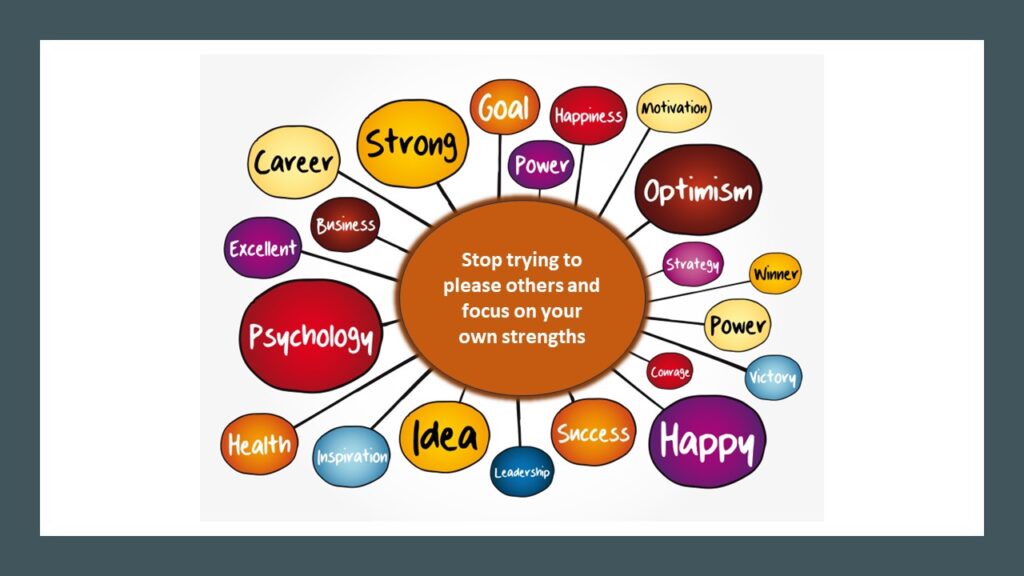
By Thomas Davis, DNAP, MAE, CRNA
Do you have difficulty saying no when someone imposes on you? Do you feel responsible for how others feel, and do you say that you agree when you don’t? Do you avoid conflict and accept fault when you aren’t to blame? If so, you are not alone. According to a 2020 survey by YouGov, 49% of US adults classify themselves as people pleasers so you are in good company. And like most others in the PP club, you have probably discovered that deferring to the needs of others does not enhance your mental health or happiness.
Nurse Anesthesiologists and nurses in general are at increased risk of being people pleasers because of the job we do and the role that we play. After all, nurses are nurturers, and our profession is built upon rendering care and comfort to others. Although our intentions may be noble, extending the professional caregiver role to our personal life and sacrificing our own needs in deference to the needs of others will ultimately create stress, unhappiness, and burnout in the pleaser. The stereotype of healthcare workers being people pleasers is reinforced by the introduction of the drama triangle by Stephen Karpman in 1961. Psychologist Karpman studied workplace drama and noted that there are three positions on the drama triangle: persecutor, victim, and rescuer. His work revealed that people usually enter the triangle at the same position and once the drama begins, individuals shift from position to position. In my work with groups of nurse anesthesiologists, I have found that approximately 80% state that they enter the drama triangle as the rescuer which is totally consistent with nurturing and people pleasing. Nurses want to make things better…they need to be needed.
Author Johanna Schram notes that people pleasing denies our personal needs and is not healthy. She lists the following as dangers of people pleasing.
- It sends a message that we are not good enough and changing who we are to please others reinforces a concept that we are inadequate as we are.
- It creates a barrier to a deeper relationship. When we focus on what they think of us, we lose the opportunity to get to know who they really are as individuals.
- We neglect ourselves by always putting the needs of others first.
- We suppress our emotions out of dread that expressing joy, sadness, anger or fear will make the other person uncomfortable.
- Our actions are manipulative and dishonest.
- We teach others how to treat us and as we accommodate, they make even more requests for our time and energy.
- We lose track of ourselves and suppress our preferences in lieu of approval from others.
The extreme opposite of the people pleaser is the narcissist who puts personal importance and selfish needs above all else. We have all known people who think they own the world and the rest of us are there to serve them. The key for your own mental health and personal happiness is to carve out a niche that falls in between people pleasing and narcissist. Setting boundaries for yourself and others is a good way to start re-defining how you interact with others.
Author Kim at the Clay behavioral health center urges people to be aware of their personal needs, be true to those desires rather than trying to fit in, and suggests that learning to say no is a great way to start the process. Negotiation coach Chris Voss emphasizes that an honest no is better than a false yes and that sincerity reinforces personal integrity. Offering additional advice on how to break the people pleasing habit, Psychology Today author Jennifer Gutman provides the following tips:
- Practice being alone. You don’t have to become a hermit, nor are you obligated to be immediately available to the whims of others. Balance yourself by taking a break from being with others and find fulfillment in activities that you enjoy.
- Keep the plans that you make for yourself. Don’t knee jerk and abandon your personal agenda just because someone puts a demand on your time. Set boundaries for yourself and others by saying, “thanks for asking, but I have other plans.”
- Decide by yourself. People pleasers hedge their desires by first considering how others will react. Have confidence, follow your instincts, decide, and stand by it.
- Don’t offer unsolicited advice. People pleasers are fixers and want to rescue others. Your intentions may be honorable; however, it is much better to show empathy than to offer solutions to other people’s problems. Don’t give a solution, rather, help them discover a solution themselves.
- Develop a positive inner dialogue. Everyone has a constant inner dialogue running in the background of their thoughts. Focus on positive self-talk and reassure yourself that you are capable,
competent, and your happiness is not dependent upon the approval of others.
In general, people want to be appreciated and accepted by others and some individuals think that altruistically giving of themselves is the key to success. However, people pleasing is driven by insecurity, low self-esteem, and a commitment to avoiding conflict at all costs. Escape the negative spiral by valuing your strengths and set both internal and external boundaries to manage rather than avoid conflict. Follow the suggestions above and free yourself from the endless obligation of pleasing others.
Tom is anexperienced leader, educator, author, and requested speaker. Click here for a
video introduction to Tom’s talk topics.